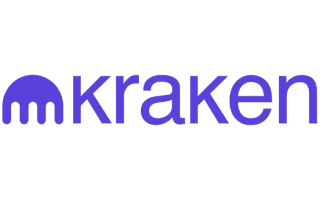
- Use code Finder30 to get a 30% discount on all commission for 1 transaction
- Lists 75+ cryptocurrencies
- Many fiat currencies supported
- Supports debit and credit purchases
Wondering how to trade crypto in Canada? Whether you’re a total beginner or experienced investor, here’s how to buy crypto. Note that trading crypto is notoriously unpredictable and isn’t suitable for everyone. Prices can fluctuate wildly in a short period; profits and losses can be made quickly.
This is not an endorsement of cryptocurrency or any specific provider, service or offering. It is not a recommendation to trade or use any services.



Crypto trading refers to buying and selling cryptocurrencies through an exchange or trading platform. Similar to traditional stock trading, crypto traders aim to profit from price fluctuations in the market by buying low and selling high.
Trading typically involves using technical analysis tools and market research to identify potential opportunities and make informed decisions. Traders can choose from various styles, including day, swing and position trading, as well as strategies such as range trading or mean reversion.
Cryptocurrency trading has become increasingly popular in recent years due to its unique characteristics like decentralized networks and the potential for high volatility. Here are some of the most common reasons people trade crypto:
Crypto trading involves buying and selling digital assets through a cryptocurrency exchange or trading platform, while stock trading involves buying and selling stocks through a stock exchange. Cryptocurrency markets are open 24/7, while stock markets have set opening and closing hours.
A major difference between them is that stocks represent fractional ownership of a publicly listed company. In Canada, this comes with certain consumer protections and shareholder rights. Conversely, the use cases for cryptocurrencies are incredibly diverse and ownership doesn’t necessarily entitle you to anything other than the asset itself.
Crypto and stock trading both rely on identifying trading opportunities and managing risk, but crypto trading is generally considered higher risk due to these markets’ inherent volatility and comparatively low liquidity.
Crypto trading involves buying and selling digital currencies like Bitcoin, Ethereum and other altcoins. Traders aim to capitalize on market price fluctuations by speculating on the future value of these assets.
They can either go long, venturing that the price will increase, or go short, anticipating a decrease. Crypto trading operates 24/7 and offers opportunities for short-term and long-term investments.
There is no one-size-fits-all approach to trading, as each person has a unique market perspective and strategies often differ depending on market conditions, risk tolerance and investment goals.
Let’s say you have done your research and identified Ethereum (ETH) as a potential buy opportunity. You believe it has strong fundamentals, including an upcoming development advancement and potential for long-term growth. You’ve also evaluated the technicals and identified a bullish chart pattern and positive indicators.
You decide to enter a long position on ETH by buying 10 coins at a price of $4,000 per coin, using a total of $40,000 of your trading capital. You set a stop-loss order at $3,700 to limit your potential losses.
Later, the price of ETH rises to $4,500 per coin. Following your trading plan, you close your position and take profits. You sell your 10 coins for a total of $45,000, making a profit of $5,000 (12.5%) on your initial investment.
In this example, you used fundamental and technical analysis to identify a potential buying opportunity and managed your risk by setting a stop-loss order. You also had a profit target in mind and closed your position when the price reached your target.
It’s important to remember that not all trades will be profitable. Implementing a solid trading plan and risk management strategy is crucial to success.
Choosing the best crypto to trade depends on several factors, including your trading strategy, risk tolerance and market conditions. Here are some key factors to consider:
Remember, there is no one-size-fits-all approach to choosing the best crypto to trade. It’s essential to have a plan and risk management strategy that aligns with your goals and trading style.
Crypto investors are typically divided into two groups—long-term and short-term traders. While every trader has a unique approach to the market, basic guidelines for these groups are as follows:

Long-term traders buy and hold cryptocurrencies for weeks, months or even years, with the intention of selling at a profit or using it later.
This might be your style if you think crypto will rise in value in the long run and don’t want the stress of actively trading.

Short-term trading is about taking advantage of short-term cryptocurrency price swings.
It’s more active, stressful and risky than long-term trading, but it also offers faster and larger potential returns for those who do it right. It also lets you profit from crypto prices dropping as well as rising.
Day trading crypto involves buying and selling within a single trading session—usually within a few minutes to a few hours. Day traders, otherwise known as scalpers, use technical analysis, order flow and other tools to identify short-term opportunities and make quick trades based on market conditions. Charts used by scalpers are typically 1 minute to hourly.
Although day traders’ profit targets are generally much smaller than swing traders, the aim is to take advantage of small price fluctuations many times throughout a trading session. This advanced style of trading is often associated with using leverage and derivatives.
Swing trading is a strategy that involves longing or shorting Bitcoin and other cryptocurrencies over a medium-term period, typically several days to weeks, to profit from price movements.
Swing traders aim to take advantage of more significant price movements than day traders while minimizing the risks associated with long-term investments. Swing traders use technical analysis and charting tools to identify trading opportunities, usually monitoring charts from the 1 hour to daily.
Position trading involves buying and holding cryptocurrencies for a long-term period, typically several months to years, with the aim of profiting from long-term trends and growth in the crypto market.
Position traders use fundamental analysis and market research to identify promising cryptocurrencies and hold through market fluctuations. This strategy requires a strong conviction in the long-term potential of the assets being held and a willingness to weather short-term volatility.
Position traders monitor a range of high timeframe charts, as well as news events and market fundamentals.
Crypto derivatives allow traders to speculate on the price movements of an underlying asset without holding the asset itself. For example, an Ethereum derivative contract will represent the price of ETH but will not be able to be withdrawn or transferred on the Ethereum blockchain.
Derivatives include crypto futures, margin and options and often involve leverage. This trading style is more complex and risky than traditional spot trading and requires a good understanding of the underlying assets and market dynamics.

"An unfortunate combination of leverage, impatience, and emotional trading is a common trend in the crypto market. Fortunes have been won and lost with leverage, and new traders should strive to avoid using leverage and maintain a cautious approach."
Diving into the world of crypto trading requires a solid understanding of the various analytical tools at your disposal. Key tools for reading the crypto markets include technical, fundamental and on-chain analysis. These approaches can help you make well-informed trading decisions, optimize your strategies and navigate the volatile digital asset landscape.
Technical analysis is a trading technique used to forecast future price movements based on past market data. Technical analysts use patterns, trends and indicators to identify potential trading opportunities and manage positions.
Fundamental analysis involves analyzing the underlying factors that affect the value of a cryptocurrency, such as technology, adoption and regulatory developments. Following the fundamentals can help you make more informed decisions about buying or selling based on its intrinsic value and potential long-term growth prospects.
On-chain analysis is a method of analyzing a blockchain to gain insights into its network activity, such as transaction volume, miner and staker activity and wallet balances. Due to the transparent nature of blockchains, on-chain data can provide valuable information, such as the cryptos held by a whale or institutional investors.
Cryptocurrency trading incurs many of the risks of trading on any other market as well as some unique challenges.
To make comparing even easier we came up with the Finder Score. Supported coins, account fees and features across 28 cryptocurrency trading platforms are all weighted and scaled to produce a score out of 10. The higher the score, the better the exchange—simple.
In our Finder: Consumer Sentiment Survey January 2025, we asked Canadians what the most appealing types of investments are in 2025, and just over 21% of respondents chose cryptocurrencies like bitcoin and Ethereum. Crypto meme coins and crypto-themed ETFs are less popular options, earning just 4% and 6% of votes respectively.
Trading Bitcoin and other cryptos can be a lucrative venture. However, cryptocurrency markets are highly volatile and the risk often outweighs the reward. Even the most experienced traders aren’t immune to losing streaks.
Before trading cryptos, ensure you’re familiar with the market and have a solid trading plan and risk management strategy implemented. Choose an exchange or trading platform that suits your strategy, and practice trading on small size or a demo account to get a feel for the platform and its features.
Never rush into trades. Monitor the charts and wait for an opportunity that aligns with your strategy before executing. The crypto market never sleeps, so there’s no need to feel like you’re missing out if you don’t have an open position.
Find out how day trading crypto works, and compare our picks for the best crypto day trading platform in Canada.
When other traders are dumping their bags, it may be the time to deploy that cache of fiat you’ve been saving up. This article explores the strategies pro traders use to buy the dip.
Crypto ETFs let you invest in bitcoin and other cryptos—often with less risk than buying crypto directly. Learn more in our guide.
Your detailed guide to cryptocurrency trading bots, how they work and the benefits and risks you need to consider when choosing a crypto trading bot.
There’s much to gain and lose in the volatile cryptocurrency market. If you want to make the best decisions, then you need to understand how to do a technical analysis. This guide from finder will tell you everything you need to know.
Read our beginner’s guide to cryptocurrency arbitrage, how it can help you take advantage of crypto price differences and the risks you need to be aware of before you start trading.